SUMMARY
This is AI generated summarization, which may have errors. For context, always refer to the full article.
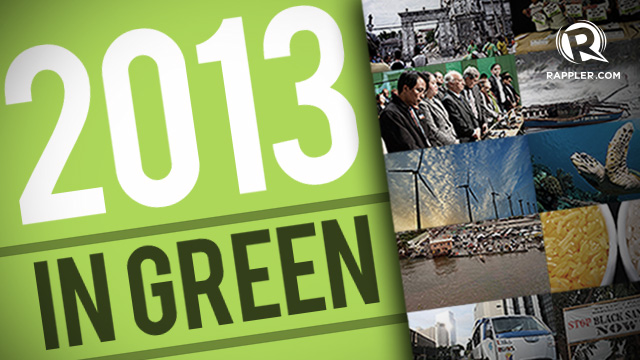
MANILA, Philippines – Often a silent witness to man’s folly, nature every once in a while becomes the main player. The year 2013 proved this again.
Mother Nature was ravaged by major oil spills, continued illegal mining, and the destruction of its protected ecosystems. The lack of major environmental laws and the failure to implement existing ones have caused environmental loss and deaths.
But the tables often turned. Nature unleashed its fury on the country in the form of two major disasters: Super Typhoon Yolanda and the Central Visayas earthquake. Outside the Philippines, other countries went through powerful disasters, too.
This year’s top 10 environmental news proves a basic environmental principle: Everything is connected to everything else.
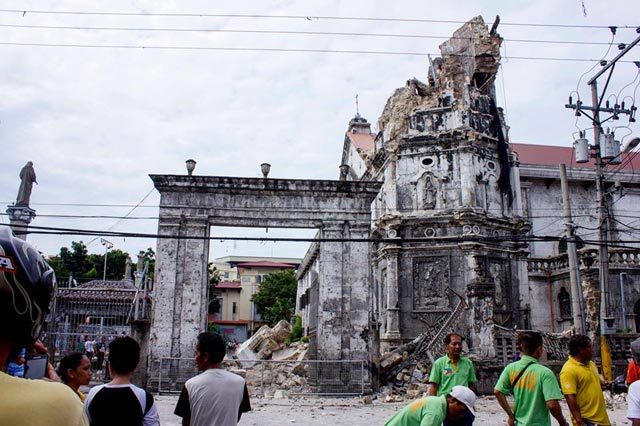
1. The disasters
The Philippines and the rest of the world were unprepared when Super Typhoon Yolanda (Haiyan) first made landfall on November 8. The off-the-charts typhoon, said to be among the strongest recorded in history, cut a path of destruction across Eastern Visayas, devastating Eastern Visayas, northern Cebu, and northern Panay.
It claimed more than 6,000 lives, leveled thousands of homes and infrastructure, destroyed precious crops and crippled the fishing industry of affected provinces. It triggered landslides, flooding and monstrous waves.
Barely a month before that, Central Visayas was shaken by a 7.2-magnitude earthquake that killed more than 180 people and damaged houses, airports, roads and many iconic heritage structures.
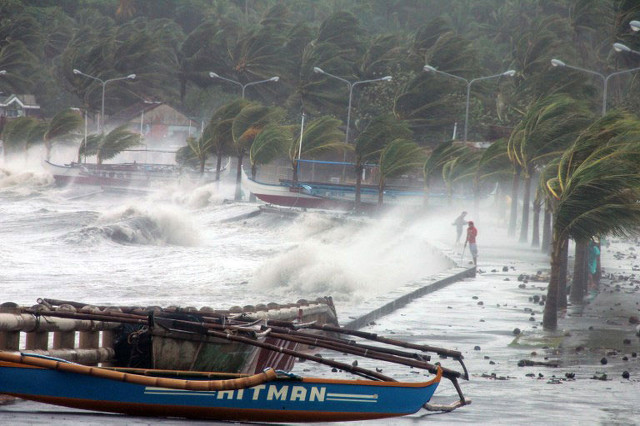
2. Yolanda and climate change
Yolanda’s ferocity begs the question: was the disaster caused by climate change?
International scientists have reached an overwhelming consensus that climate change leads to stronger and more frequent extreme weather events like storms, droughts, melting of ice caps and storm surges.
Released in September, the 5th United Nations report on climate change (IPCC 5), concluded that if the earth warms by more than two degrees Celsius, catastrophes like Yolanda will become the new normal.
Yolanda sparked interest in what the country and the rest of the world are doing to curb climate change and adapt to its devastating impacts.
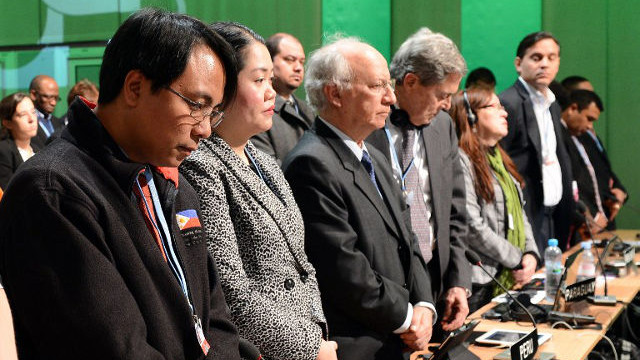
3. The Warsaw climate change talks
When Philippine Climate Change Commissioner Naderev “Yeb” Saño made his emotional speech in front of all the Warsaw delegates, he made a disturbing connection between climate change and Typhoon Yolanda.
But he also reminded delegates about how the worst effects of climate change can be attributed, at least in part, to the inaction of developed countries.
It is the unabated greenhouse gas emissions of these countries that drive climate change, Saño insisted. The cruel irony of it all is that poorer countries who are the least responsible for the phenomenon are its victims.
During the talks, Japan, Australia and Canada reneged on their commitments to reduce carbon emissions. But the talks also created the Warsaw International Mechanism for Loss and Damage, a mechanism that provides financial assistance to poor countries vulnerable to climate change.
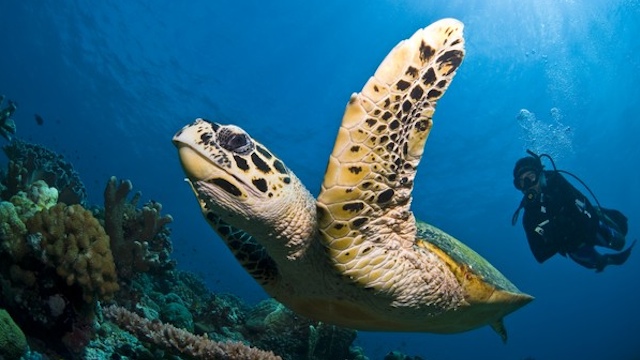
4. Boon and bane for protected areas
The world-renowned marine sanctuary Tubbataha Reefs in the Sulu Sea sustained major damage when two ships crashed into its corals on two separate occasions. A US Navy ship and a Chinese fishing boat ran aground the UNESCO World Heritage Site and divers’ paradise last January and April, respectively.
The two incidents damaged more than 6,200 square meters of protected coral reefs.
Though the owners of the vessels were made to pay millions in fines, it will take a long time to recover the lost reefs.
Other sanctuaries suffered from man’s misdeeds. Mountaineers grieved the unabated garbage problem in legendary Mt Apo, the highest mountain in the Philippines. Divers lamented the heaping amount of trash in our oceans and endangered centers of biodiversity. (READ: Isla Verde: Garbage, pollution threaten world jewel)
But there were also victories for our protected areas.
Mt Makiling was declared an ASEAN Heritage Park, strengthening impetus for its protection and conservation. A new law was also passed, empowering local communities to pursue ecotourism projects for the conservation of protected areas under their jurisdiction.
5. Waiting for the National Land Use Act
Yolanda and the Central Visayas earthquake renewed the cry of citizens for a National Land Use Act, a law that will categorize how land is used based on factors like geohazards, food security, water sufficiency and environmental stability.
Though President Benigno Aquino III certified its passing as urgent, the proposed bill is still languishing in Congress.
The bill, when passed as law, will establish permanent agricultural lands and ban construction of buildings in places vulnerable to landslides, flooding and storm surges. It is said to be the most sustainable, long-term preparation for climate change.
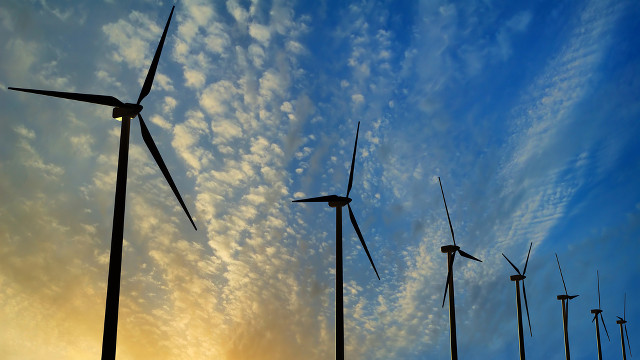
6. Renewable energy vs fossil fuel energy
To strengthen the Renewable Energy Act, the government released incentives to attract more renewable energy companies to put up shop in the country. Many companies have now been approved by the Department of Energy ensuring that renewable energy will make its way to the national power grid in 2014.
Despite progress in “green” energy, the government also approved more fossil fuel power plants, to the frustration of environmentalists. A proposed DMCI coal power plant in Palawan was blocked by a court after fierce opposition from citizens.

7. The rise of Golden Rice and GMOs
Scientists say they will make Golden Rice commercially available in the Philippines in 2016. Golden Rice, a genetically-modified (GM) food being developed in the country, is hailed by supporters as the world’s solution to malnutrition. But opponents call it a “Trojan horse” for other GM foods, a mask for the potential health and environmental impacts.
Field trials for another GM crop – Bt talong (eggplant) – were stopped by a court angering scientists who believe genetic engineering can ensure food security and help farmers.
The Philippines is considered one of the most GMO-friendly countries in Southeast Asia. The government has approved more than 44 GM crops and foods.

8. Oil spills
Last August, around 500,000 liters of oil leaked into Manila Bay from a crack in a pipeline owned by Petron. For days, a reddish sludge and nauseating smells took over sea waters and shorelines.
Two months before, an oil depot in Sta Ana, Manila spewed 500 to 1,000 liters of oil into the Pasig River. It was soon discovered that the facility violated environmental, sanitary and zoning laws.
Yolanda’s ferocity caused a National Power Corporation (Napocor) power barge to slam into a coastal town in Estancia, Iloilo, resulting in a massive oil spill. The air and water pollution from the oil spill reached critical levels, prompting health officials to call for the urgent relocation of locals.
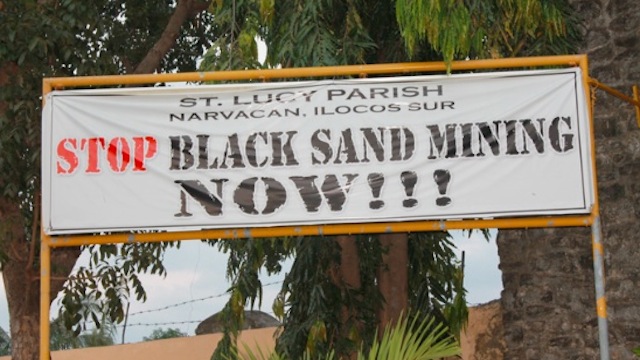
9. Black sand mining
Black sand mining, the extraction of magnetite or black sand, has stripped northern provinces of many of their beaches causing coastal erosion and exposing seaside communities to floods.
Illegal because its operations happen too near the sea, black sand mining has nonetheless proliferated because of small-scale miners licensed by local governments.
In August, 18 Chinese nationals suspected of black sand mining were detained in Cagayan. Three raids in the area led to the confiscation of mining equipment and thousands of tons of magnetite concentrate.
10. Urban pollution
Pollution in major cities in the Philippines, notably Metro Manila, remains a deadly problem.
The World Bank estimates that air pollution in Manila causes 5,000 premature deaths annually, the highest of any city in the Philippines.
Steps have been taken by the private sector to address this. Hybrid diesel-electric buses started plying Makati roads. Battery-powered e-shuttles will soon be running in Quezon City and Pasig this January.
Because these vehicles run partly or completely on electricity, they will not add to the countless smoke belchers that make metro living potentially fatal.
Lack of basic infrastructure in our cities also exacerbates environmental and health impacts as can be seen in the case of sewage.
More than 20 million Filipinos have no access to proper sanitation and sewage facilities. This leads to 55 deaths daily from water-borne and vector-borne diseases like leptospirosis, malaria, dengue, hepatitis and Typhoid fever.
But a newly-launched government program seeks to provide the entire country with proper sewerage and seepage systems by 2020. More sewage pipelines and wastewater treatment facilities will be provided for communities. – Rappler.com
Wind turbine image from Shutterstock
Add a comment
How does this make you feel?
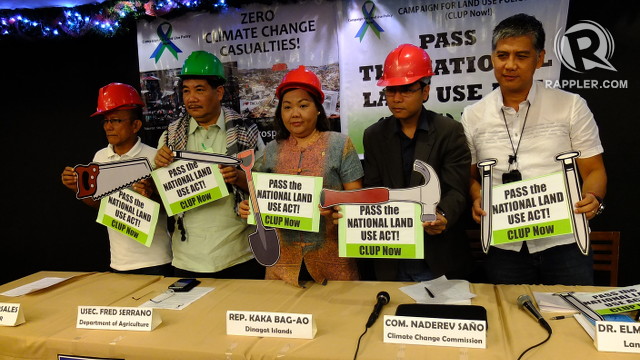

There are no comments yet. Add your comment to start the conversation.